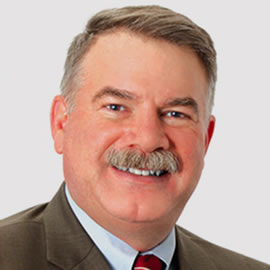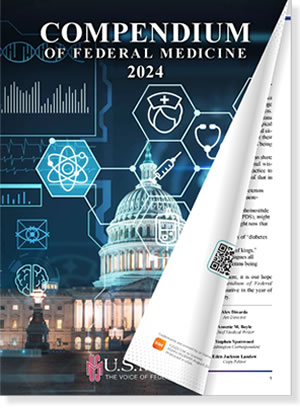‘This may be the age of automation, but love is still being made by hand.’ – Evan Esar (1899-1995)
I am pleased to report that my wife, Pam, is now weeks into her recovery from spinal fusion surgery. Her surgical staples are out, and she is healing nicely. As I have noted previously in this column, it had been an educational experience living on the receiving end of healthcare. One of the realities of modern healthcare I have observed is the incredible increase in automation that has crept into medical practice. I had undoubtedly noticed this change over the 30+ years of my career. Still, the pace of change appears more intense than I have experienced before.
I want to be clear that the comments I am making should in no way be seen as critical regarding the medical team we had the pleasure of interacting with at Johns Hopkins in Baltimore. The doctors, nurses and support staff were incredible professionals. We are grateful that the Hopkins system is part of military medicine. Pam and I were thoroughly impressed with the care Pam received and owe the staff at Johns Hopkins our heartfelt thanks. However, my thoughts are generally directed more toward modern medicine in this country, of which Johns Hopkins is a leading institution.
One of my first observations was how practitioners today have become slaves to computer terminals. Johns Hopkins seems to be overcoming with this issue by having providers visit in pairs. One to engage the patient while the other works the computer. For example, Pam’s surgeon had the luxury of using a medical scribe during pre-surgical visits. This allowed him to interact with Pam and answer her questions with his full attention. I was impressed with this. He looked Pam in the eye when he expressed his confidence in doing the procedure, instead of staring at a screen while entering Pam’s medical history into a console. Unfortunately, many other providers who interacted with us were forced to interview Pam while engaged with a computer. I am certainly no stranger to this behavior. Fortunately, I had the luxury of residents doing the keyboard tapping while I interacted with patients the way nature and Hippocrates intended.
We have also noticed how challenging interacting with the healthcare system could become if the data entered into our Computer Overlord is at all flawed. This issue is certainly not the computer’s fault, since it took a human to put the information in wrong (garbage in, garbage out). Sadly, though, once the erroneous information miraculously becomes zeros and ones, it takes on an air of finality that tends to defy any mere human’s ability to change. For example, according to the all-knowing computer, one of the excellent nurses involved in Pam’s anesthetic care is listed as an unapproved provider for our insurance. This information, though disconcerting, is ridiculous, since this practitioner cared for Pam during most of the 7-hour surgery. I am pretty sure she was not a guest anesthesia provider. We have not been able to convince El Jefe Computer that the provider works at Hopkins, and we should not be charged $3,800 for this error. It is not looking good, but we will keep trying.
Mother Superior Computer can also become challenging when electronic rules for prescribing dangerous drugs to prevent misuse and abuse rub up against actual, non-standard, non-digitized human life. Pam and I maintain a permanent address in Florida, travel full-time around the U.S. in an RV and rarely get our routine medications from the same pharmacy twice. Pam was prescribed an appropriate amount of codeine to manage moderate to severe pain after discharge from the hospital. When the electrons for this prescription landed at the community pharmacy where we were staying, the poor machine probably had the computer equivalent of a heart attack. Out-of-state people (Florida no less) getting a hefty dose of opioids (major surgery), and this is not their regular pharmacy (nothing is standard about our lives at the moment). The poor machine likely passed a little ozone gas as it rejected this prescription for folks who were obviously drug dealers based on its rigid electronic operational rules. I honestly do not mind Terminator Computer coming to this conclusion, as long as its human masters (ahh, nope) can listen to our human explanation and override the zeros and ones of the machine. Unfortunately, this was not the case. The pharmacist was new and did now know how to override the Almighty Computer. Given it was a Saturday, her “I’m doing my best, but I don’t know who to call” was deflating. It took multiple calls to the hospital, hours of effort, a few tears and three different pharmacies before we could finally fill the prescription. Had we failed to beat Kubla Computer at this game, Pam likely would have ended up in the emergency room to manage her pain. We won because we have 60+ years of healthcare system experience between us. What happens to regular people? I actually did feel like a drug mule the following day because, in the end, we had interacted with so many pharmacy computers that her other prescriptions were spread all over town. Perhaps, in the end, Emperor Computer had the last electronic laugh.
These events were not the computers’ fault, and the health professionals did an incredible job trying to help us. The issue seemed to center on the human/computer interface. Years of professional training seemed to be rendered moot by some printed circuitry and essentially sand. Personally, I admit my own slow divorce from active clinical practice in the operating room was partly due to the general “upgrade” to computer anesthetic records. I fondly recall being able to record an entire daylong surgical case on a paper anesthetic record. I prided myself in the completeness and neatness of this documentation. Later in my career, as keyboards replaced pens, my neat page or two anesthetic records ballooned into a small book of pages and forms serving the “paperless” electronic record. I shudder to think of the forests that have been cleared in support of the electronic medical record. But I digress.
I am not against automation and computers in medicine. The value of instant medical information online and computerized diagnostic support tools that the little silicon wafers provide are undeniable. I have built a career on the incredible technology of laptop-sized ultrasound machines. Artificial intelligence (AI) will positively revolutionize diagnosis and medical treatment planning. As wonderful as these machines are, though, they cannot replace a human being. They cannot express empathy, understand compassion, and they certainly do not love. Humanity is the secret sauce of effective medicine. Often in the combat support hospital, all my medications and computer-driven equipment available to manage a wounded servicemember’s pain paled in comparison to my hand on the patient’s shoulder, a look in their eye and a verbal confirmation that they were going to be alright. Automation, AI and computers are fantastic adjuncts to medical practice, but we must ensure these tools do not stand between our patients and us.


